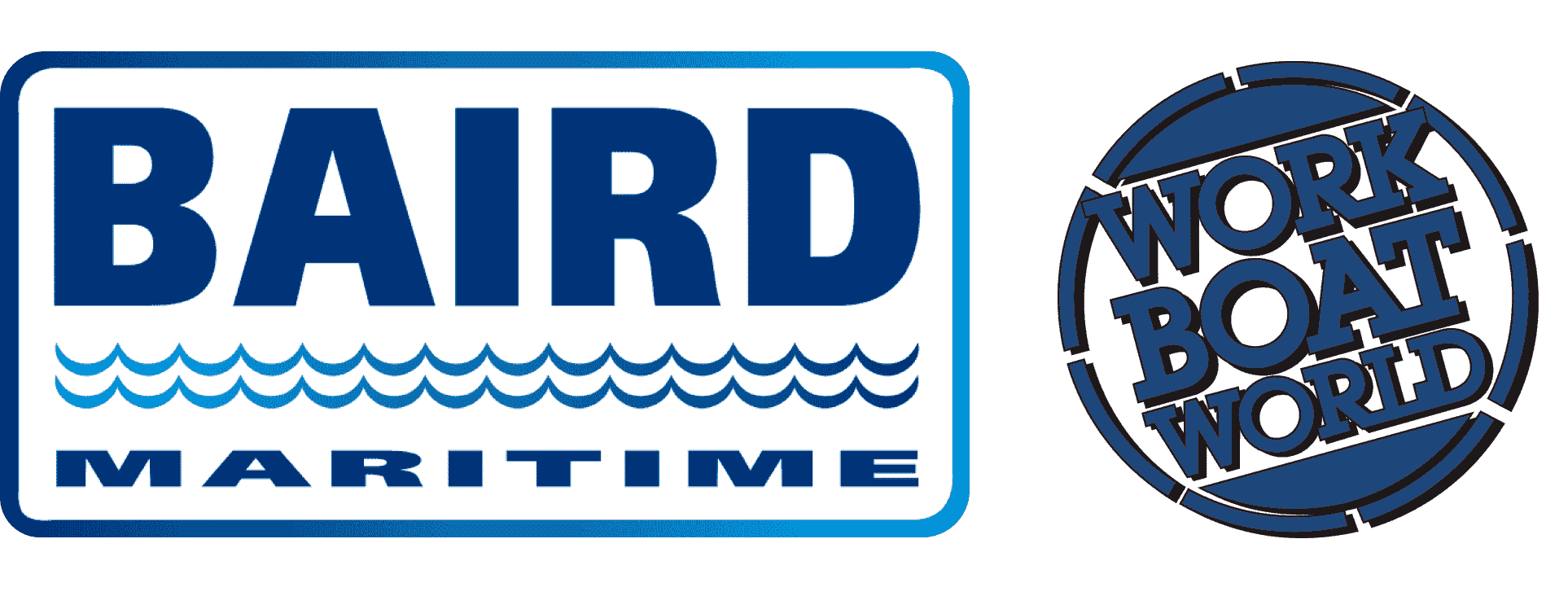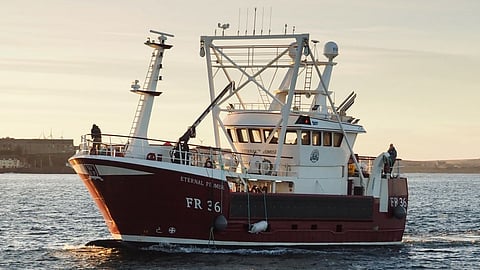VESSEL REVIEW | Eternal Promise – Scotland's Whitelink Seafoods welcomes new scalloper to coastal fleet
Macduff Shipyards of Scotland recently handed over a new scallop fishing vessel ordered by local owner Whitelink Seafoods for year-round operation around the coastal waters of the UK.
Designed by Macduff Ship Design, Eternal Promise measures 19.98 by 7.4 metres (65.66 by 24 feet) and has space for seven crewmembers. It is the second vessel built by Macduff Shipyards for Whitelink after an earlier vessel handed over in 2019.
The newbuild was originally intended to be a sister ship to the previous vessel, but a decision was taken by the yard and the owner to build a new design that would offer increased deck/fishing gear space, improved crew welfare, a more efficient hull form, and a new stern gear package with an aim to improve overall fuel efficiency.
An optimised hull coupled with reliable propulsion
During the early design phase, a case study of three different hull forms was conducted. The first hull form was the hull form of the previous vessel, which was tested in order to establish a benchmark for hull resistance. The second and third hull forms featured the same main body, but with different variations of the bulbous bow to help identify the best shape to reduce overall resistance.
The results from the study indicated a reduction in hull resistance at the two test speeds of eight and 10 knots for both variants, but with one showing a slight improvement over the other due to the bulbous bow wave interaction with the hull. Given the increased hull size and displacement for the new vessel, this was deemed to be a success.
By carrying out CFD analysis for vessel hull forms at the early design stage, the yard was able to ensure that new designs are always improving. It also lets the yard test its design concepts and to make sure these work before these are put into production.
To further reduce the environmental impact, the propulsion package was very carefully considered. The vessel features a Masson Marine W6400 gearbox with a 7.446:1 reduction, which, when coupled to the Mitsubishi S6R2 480kW (640hp) IMO Tier III-compliant main engine, results in a slow propeller speed of 181 rpm at full throttle, or around 110 rpm when trawling at typical loadings.
Due to the lower propeller speed, a large 2.5-metre, four-bladed skewed Kaplan propeller could be fitted, within a modern propeller nozzle, both supplied by Teignbridge Propellers. The propeller is 15 per cent larger in diameter than on the previous vessel and increases theoretical bollard pull by as much as five per cent.
The vessel also features a dedicated selective catalytic reduction (SCR) unit and a urea system to enable the engine to meet the new, more stringent emission standards set by the IMO. The SCR unit, though physically large, was able to be fitted into the engine room and had a high noise reduction rating of 35 dBa, reducing the noise levels experienced both inside and on deck by the crew. The auxiliary engine, which provides main hydraulic and backup electrical power on board, is also certified to IMO Tier III standards, and again features its own SCR unit and urea system.
The hull is built entirely from steel, while the wheelhouse and masts are made of aluminium. The hull features a double chine form, a curved transom stern, and an optimised bulbous bow. Below deck, from aft to forward, the vessel features the cabins, the engine room, the fish hold and a large freshwater tank forward of the collision bulkhead.
Above deck across the transom is the galley/mess, followed by accommodation and dry locker compartments, open deck space in the way of the winches, and an enclosed whaleback forward where the scallops are picked and sorted at the end of conveyors.
Comprehensive equipment fit-out for sustained operations
A bespoke hydraulic deck machinery package includes two heavy duty split winches fitted with Hagglunds compact CA100 motors giving a core pull of 11 tonnes each. A set of hydraulic tipping doors, outriggers, and catch conveyors are fitted to both sides of the vessel. Two large Bopp gilson winches were supplied by J C Hydraulics and an MFB8 landing crane was supplied by Thistle Marine.
Primary hydraulic power is provided by a Tier III Doosan 4AD126 auxiliary engine providing 287 kW at 1,500 rpm. An electric motor pump set retrieve system is also fitted. Cooling systems for all engines and hydraulics on board are served by box coolers supplied by Blokland Non-Ferro.
Electrical power is provided by a Mitsubishi generator with a rated output of 98 kWe. As a backup, a 98kWe alternator is fitted to the front end of the auxiliary engine, thus ensuring complete redundancy.
The electrical systems were fitted by R.D. Downie, which also fabricated the vessel’s switchboard and the control panels for all pumps and motor starters. R.D. Downie also provided the fire, bilge, and gas alarm systems along with the navigation light panel and assisted with the installation of the navigation equipment.
The catch handling system was built by the yard and Northeast Fabricators. The fish hold refrigeration system along with ice machine was supplied and fitted by Airo-tech Solutions.
The vessel was fully painted by the yard with International products. The high specification navigation package was supplied and fitted on board by both Woodsons and Furuno.


